Grandad 'surprised' to discover dinosaur footprint in Irchester
- Published
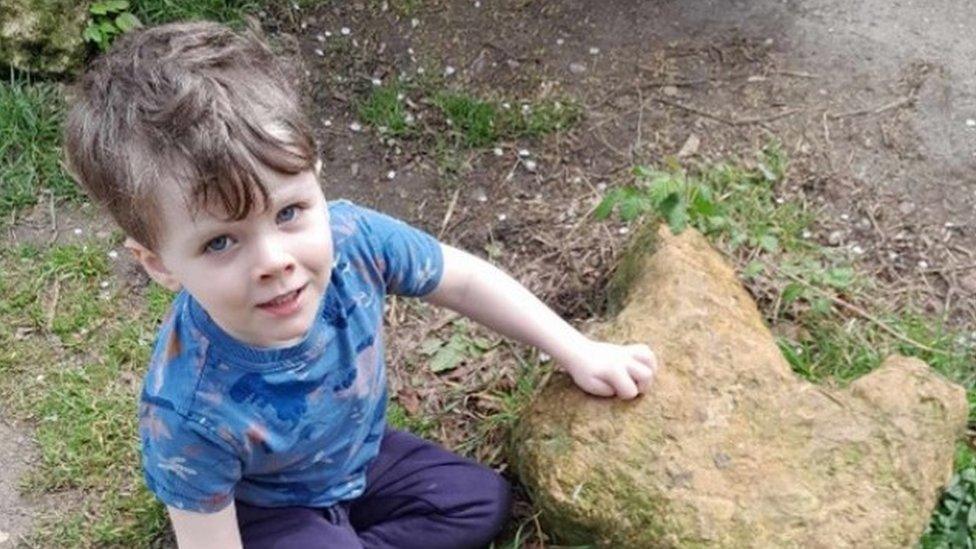
Cody, aged three, made the discovery with his grandfather Steve, a keen fossil hunter
A man said "it was a bit of a surprise" when he and his grandson stumbled upon a dinosaur footprint in Northamptonshire.
Steve Pulley and Cody, aged three, made the discovery at Irchester Country Park earlier this year when they found a cast in an "unusual rock".
London's Natural History Museum believed the footprint belonged to a six metre (20ft) long megalosaurus.
The park now planned to put the discovery on public display.
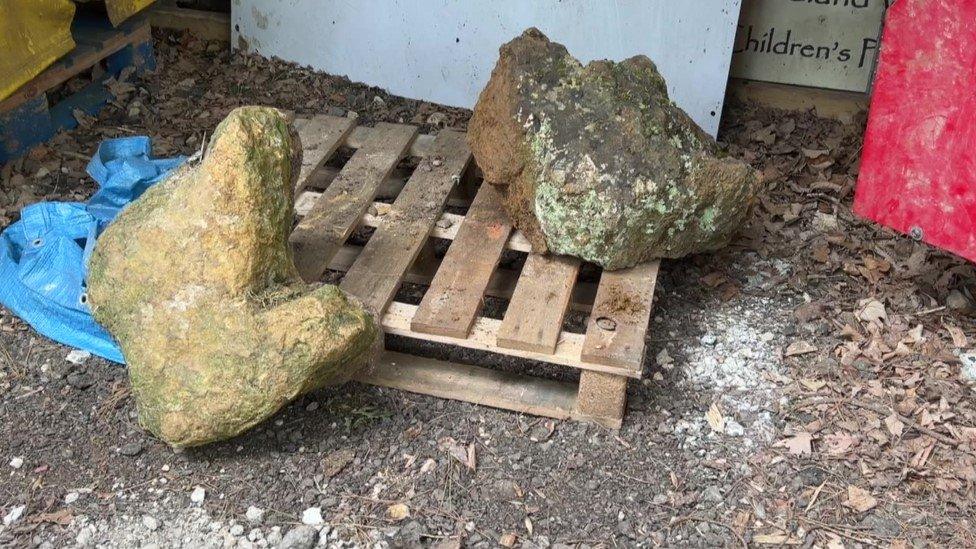
Experts say that the footprint probably belonged to a megalosaurus
Mr Pulley, a keen fossil hunter, said: "I come over here most weeks with my grandson for a walk and to look out for nature.
"We stepped over this stone and I thought 'I know what that is'. The big front toe made me think it could be a dinosaur footprint and I calculated it would belong to an animal about three metres (10ft) in height."
The sedimentary rock found by the pair was about 55cm (22in) in length and the product of the animal stepping in soft ground millions of years ago.
He said: "Irchester, Northampton and Kettering were all on the seafront of the Jurassic sea. A lot of people in Northamptonshire don't realise it used to be on the beach."
Prof Paul Barrett from the Natural History Museum said: "As far as I'm aware they're the first dinosaur footprints from Northamptonshire but similar tracks of the same age are known from elsewhere, including Oxfordshire, Yorkshire and the Isle of Skye.
"I identified them Megalosaurus as this is the only large-bodied theropod known from the UK at this exact time."

Megalosaurus facts
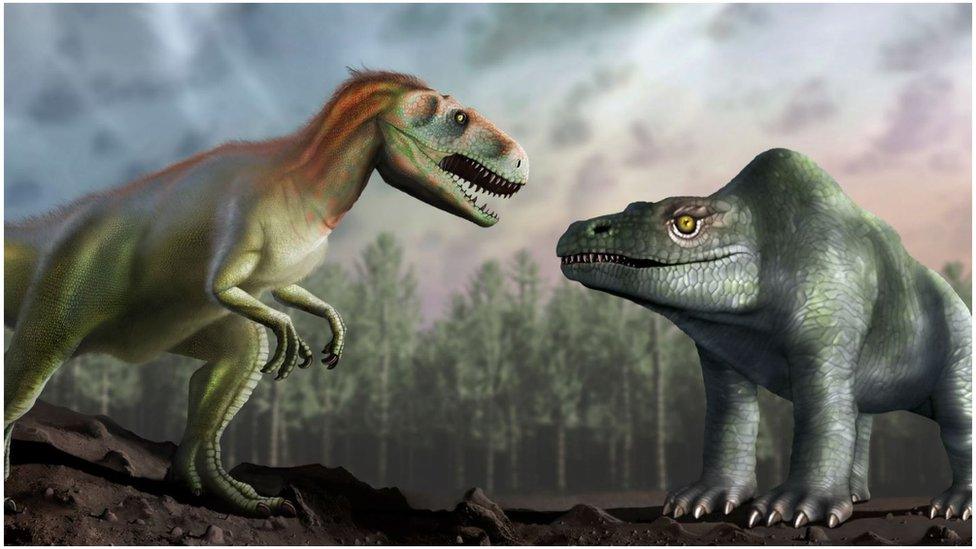
An artist's impression of how Victorian palaeontologists thought the Megalosaurus looked (right) and how modern scientists understand it to have looked (left)
Its name means "giant lizard"
It lived in England between 166.1 and 168.3 million years ago
It was 20ft (6m) long
Charles Dickens imagined meeting a megalosaurus on the muddy streets of London in the opening lines of Bleak House. They are also mentioned in Conan Doyle's Lost World

Matt Harrell, a park ranger at Irchester Country Park, said the discovery was a "shock", but had made for an "exciting time".
He said: "We are very thankful for Steve and Cody bringing this to our attention," adding that Cody may have a future as a park ranger.
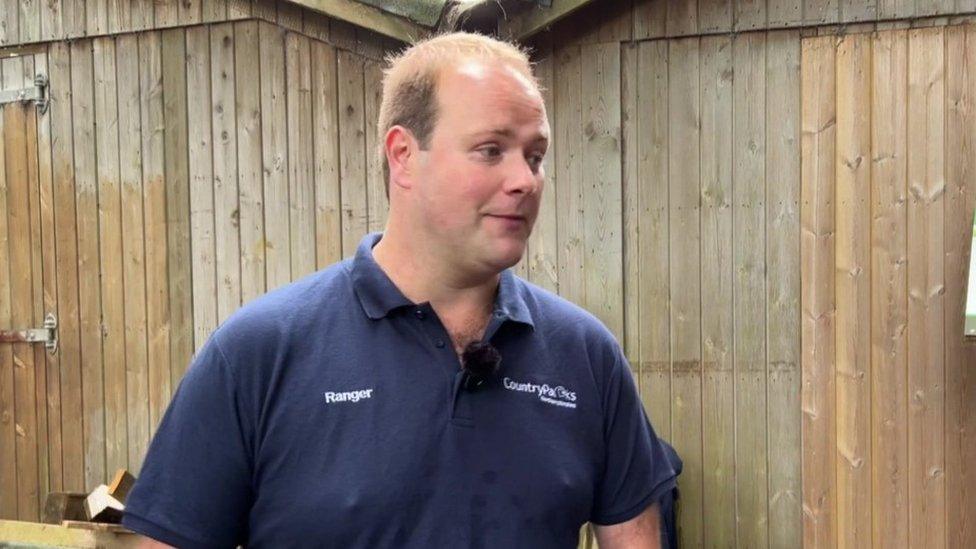
Matt Harrell said the discovery had meant an exciting time for Irchester Country Park

Got a story? Email eastofenglandnews@bbc.co.uk, external or WhatsApp 0800 169 1830
- Published14 May 2024
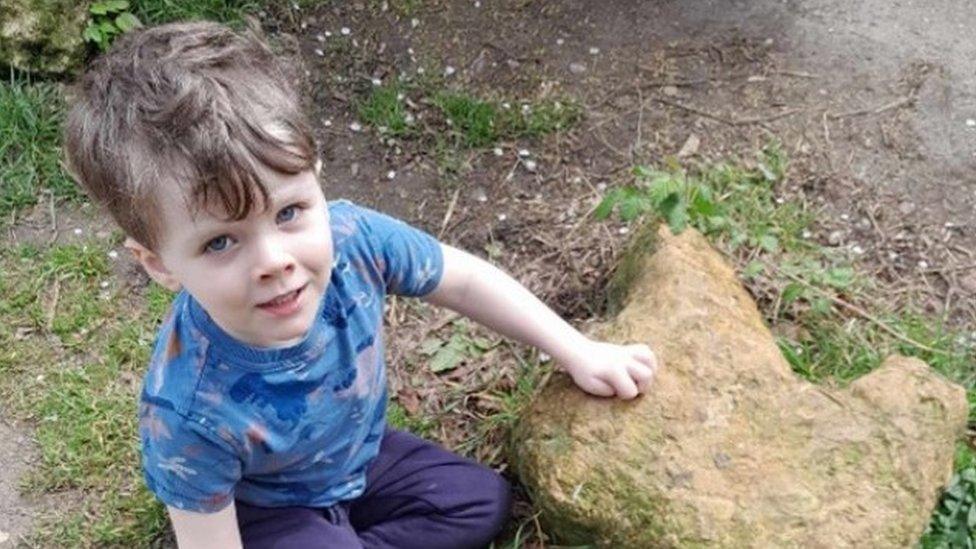
- Published28 April 2024
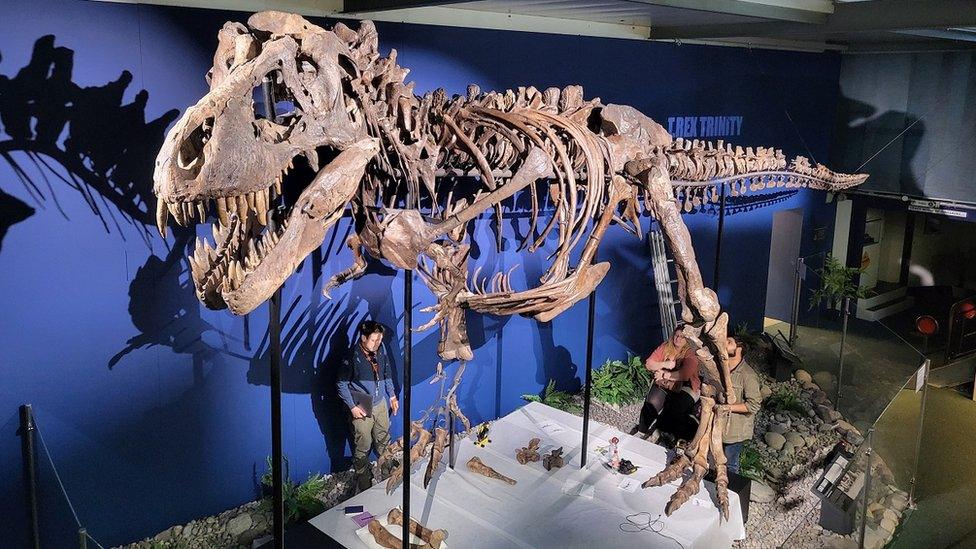
- Published21 December 2021
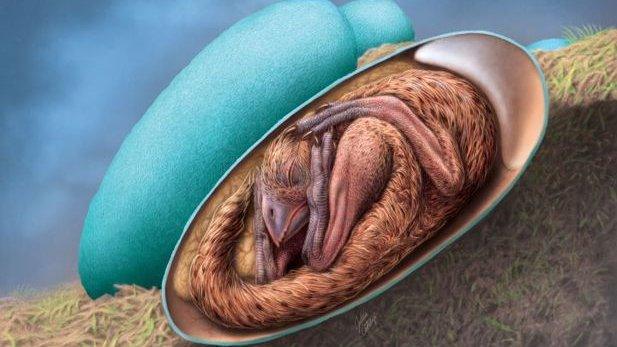
- Published6 October 2021